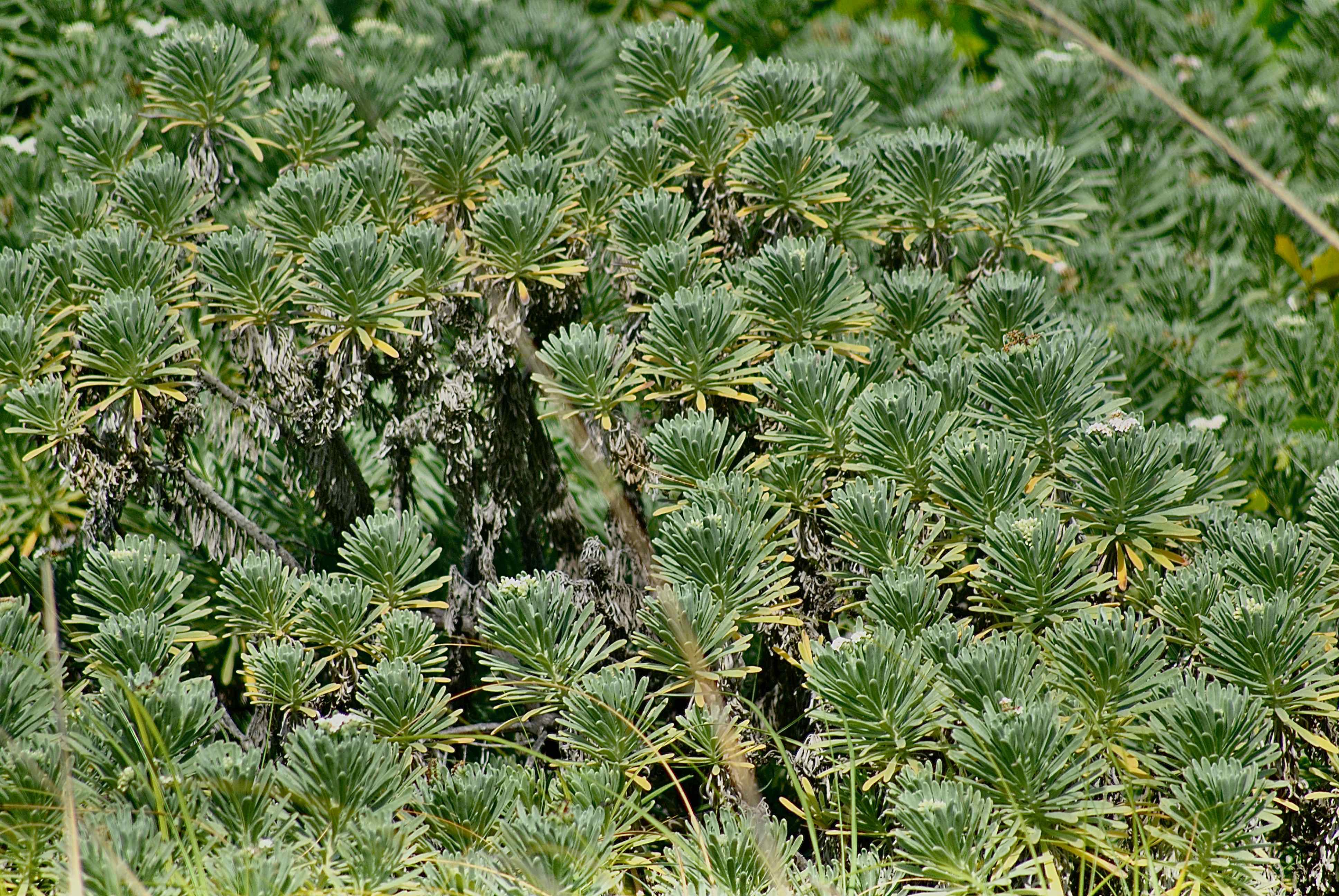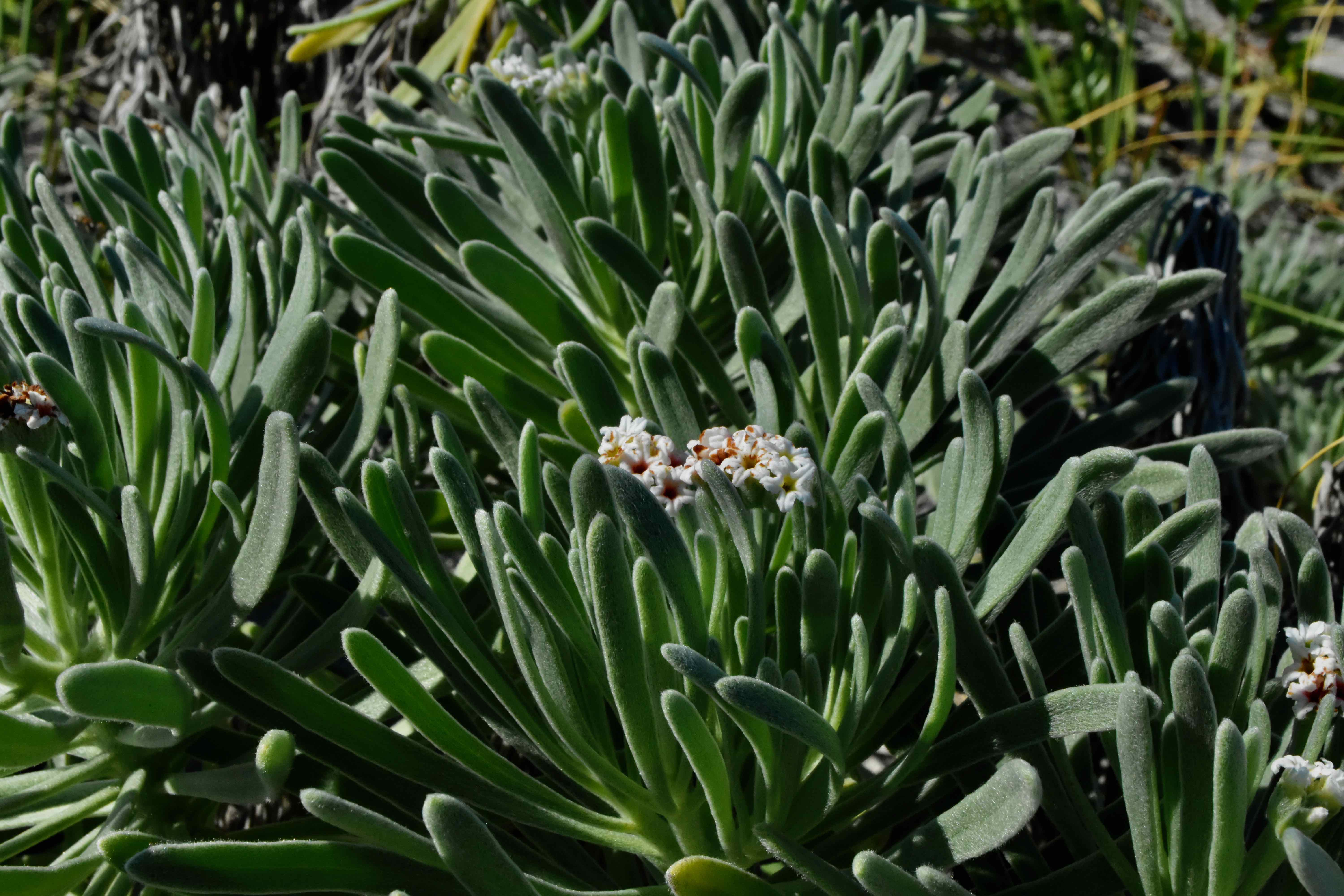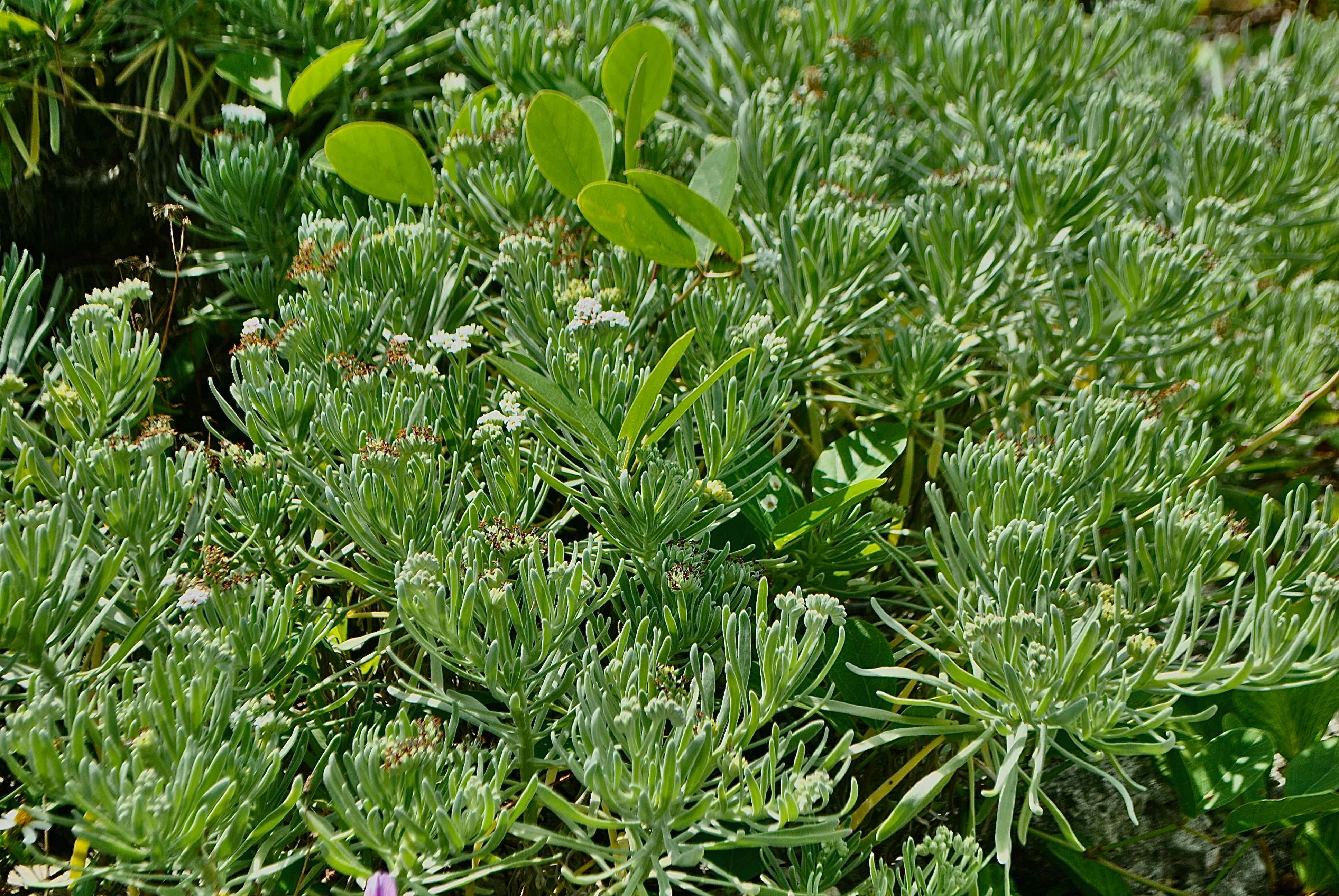
Sea lavender, photographed at Bush Key, Dry Tortugas National Park, Monroe County, in April 2017.
Sea lavender, Argusia gnaphalodes, is also known as sea rosemary. To our eyes, the leaves look more like sage. Lavender certainly. Rosemary definitely not, but no one consulted us.
In any case, sea lavender is a rare plant, native only to Florida among the 50 states, and only on the east coast, Brevard County south to the Keys. It is listed as endangered in Florida, though globally the picture of the species is a little brighter.
It's naturalized in California and Hawaii, native on Bermuda, parts of the Caribbean, including Puerto Rico, southern Mexico, Belize and Honduras. It's also made its way to a few warmer parts of the globe.
It is a shrub that stands between three and six feet high, and can form large mounds 10 to 20 feet across. It's a resident of coastal dunes, and salt spray can limit its height. Its leaves are long and narrow, covered with fine hairs that give sea lavender its white-silvery appearance.
The flowers appear year round, growing on one side of a curled spike (see the photo at bottom center); they are white with a pink-red throat and turn lavender as they age. They produce a small, corky fruit that floats, allowing the tides to help distribute the seeds to new shores.
The major cause of sea lavender's decline is loss of habitat caused by coastal development. The good news is that it is commercially available for use in landscaping. Sea lavender's foliage creates interest even when the plant is not blooming.
It's also hurricane resistant, which is critical considering its range and habitat. Sea lavender, however, is susceptible to disease if it's planted inland. Sea lavender plays a critical role in beach ecology, controlling erosion and stabilizing dunes by grabbing sand. In turn, sand helps spread sea lavender — as it collects along the branches, the plant sends out roots and new shoots.
In the Bahamas, where sea lavender is known as bay lavender, it's used to make a tea to treat fevers, gonorrhea, syphilis, kidney stones, kidney problems, fish poisoning, rheumatism, and to induce abortions.
Sea lavender is a member of Boraginaceae, or the forget-me-not family. Note: There are other plants commonly known as sea lavender that are members of the Limonium genus but have a much wider geographic range than our guy and are more likely to live in salt marshes than coastal dunes. There is one member found in South Florida, Carolina sealavender, Limonium carolinianum, but it does not look at all like our guy here.
Dry Tortugas National Park



